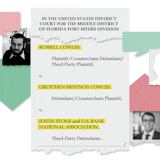Halfway through the six weeks Amazon gave North American cities to come up with ideas for its second headquarters, the team crafting Minnesota's proposal is sifting more than a dozen sites offered by municipal officials and property developers.
The team of Greater MSP, the public-private regional promotion group, and the state Department of Employment and Economic Development (DEED) is expected to inform city and county officials as soon as Friday about next steps in the process — and perhaps details on how it will make choices. The organization and agency have said little about the process.
Amazon on Sept. 7 triggered a competition among municipal regions and their economic promoters by announcing it would build a second headquarters outside its base in Seattle, where it started in the mid-1990s and now employs about 40,000 people. The company asked regions with more than 1 million people to propose by Oct. 19 locations for an office campus that Amazon said may someday have 50,000 workers.
Minnesota Gov. Mark Dayton immediately put DEED and Greater MSP in charge of the Minnesota proposal, but he threw cold water on the effort a few days later by saying the state's effort would be "restrained" and noting it is the home of two of Amazon's biggest competitors, Target Corp. and Best Buy Co.
Property owners and municipal officials see enormous opportunity, however, and poured in ideas to Greater MSP and DEED. "We received a number of great sites and are confident we can put together a strong response," said Mike Brown, Greater MSP's marketing chief. The state's proposal "can have multiple sites in it and we expect that it will," he added.
Real estate availability is one of the many criteria that Amazon listed in its request for proposals. The list of Twin Cities locations that were proposed ranges from city-owned land to private property and vacant sites to sites that require tearing down existing buildings.
Minneapolis officials submitted four sites. One is near the Minneapolis Farmers Market and Target Field and another is the Bassett Creek Valley area along Interstate 394, now used by the city's municipal works department. The city also proposed the 48-acre Upper Harbor Terminal site along the Mississippi River in north Minneapolis and the Prospect Park area, called the Towerside innovation district by developers, between the U and the city's border with St. Paul.
Prospect Park Properties President Jeff Barnhart said his firm helped submit a 14-page document that included renderings of potential Amazon buildings in the Prospect Park area. There are several large vacant parcels that could accommodate multiple phases of an Amazon campus, said Barnhart, who is involved with several mixed-use projects in the area.


